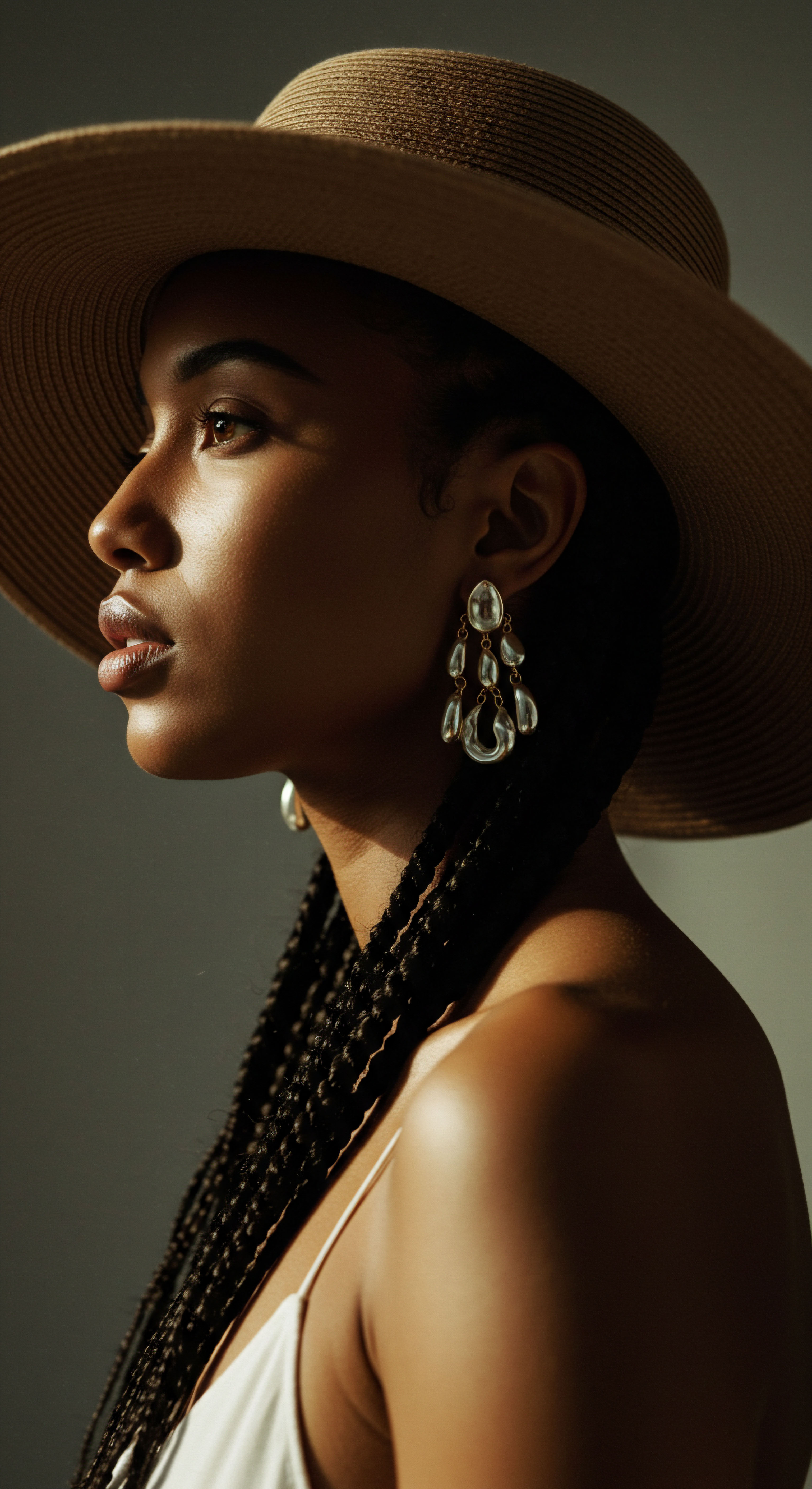
Roots
The quiet rustle of leaves, the deep comfort of earth beneath our feet, these are the sensations that ground us, much like the foundational understanding of our hair. Before we consider the protective legal shields designed to honor natural hair, we first turn our attention to the very fibers that spring from our scalps, and the deep cultural significance they hold. Our exploration begins not with legislation, but with the innate structure and profound identity carried within each strand, a heritage that whispers through generations.
To truly appreciate the legislative intent behind movements like the CROWN Act, one must first recognize the biological marvel that is textured hair and its historical positioning within society. This recognition is not merely academic; it reaches into the personal narratives and collective experiences of individuals whose hair has long been a subject of scrutiny, admiration, and, regrettably, sometimes oppression. The very coils and kinks, waves and curls, are more than protein structures; they are carriers of stories, resilience, and beauty.

Hair Anatomy and Physiology
The anatomy of textured hair, while sharing fundamental components with all hair types, exhibits distinct characteristics that shape its appearance, behavior, and care needs. At its core, each hair strand emerges from a follicle, a tiny organ nestled within the scalp. The shape of this follicle, specifically its oval or elliptical cross-section, is a primary determinant of curl pattern.
Consider how a ribbon, when pulled through a circular hole, remains flat, yet when drawn through a narrow slit, it begins to curl. Similarly, the more elliptical the follicle, the more pronounced the curl or coil of the hair shaft.
Beyond the follicle’s shape, the distribution of keratin within the hair shaft itself contributes to the hair’s unique structural integrity and curl. Textured hair often presents with an uneven distribution of keratin, which can lead to areas of varying thickness and strength along a single strand. This unevenness, combined with the hair’s natural helical shape, means that textured strands often have more points of vulnerability, particularly at the bends of the curl pattern. These points are more susceptible to breakage, demanding a more attentive and gentle approach to manipulation and styling.
The cuticle, the outermost layer of the hair, typically lies flatter on straight hair, providing a smoother surface. On textured hair, the cuticle scales tend to be more raised, contributing to a higher propensity for moisture loss and, sometimes, a perception of dryness.
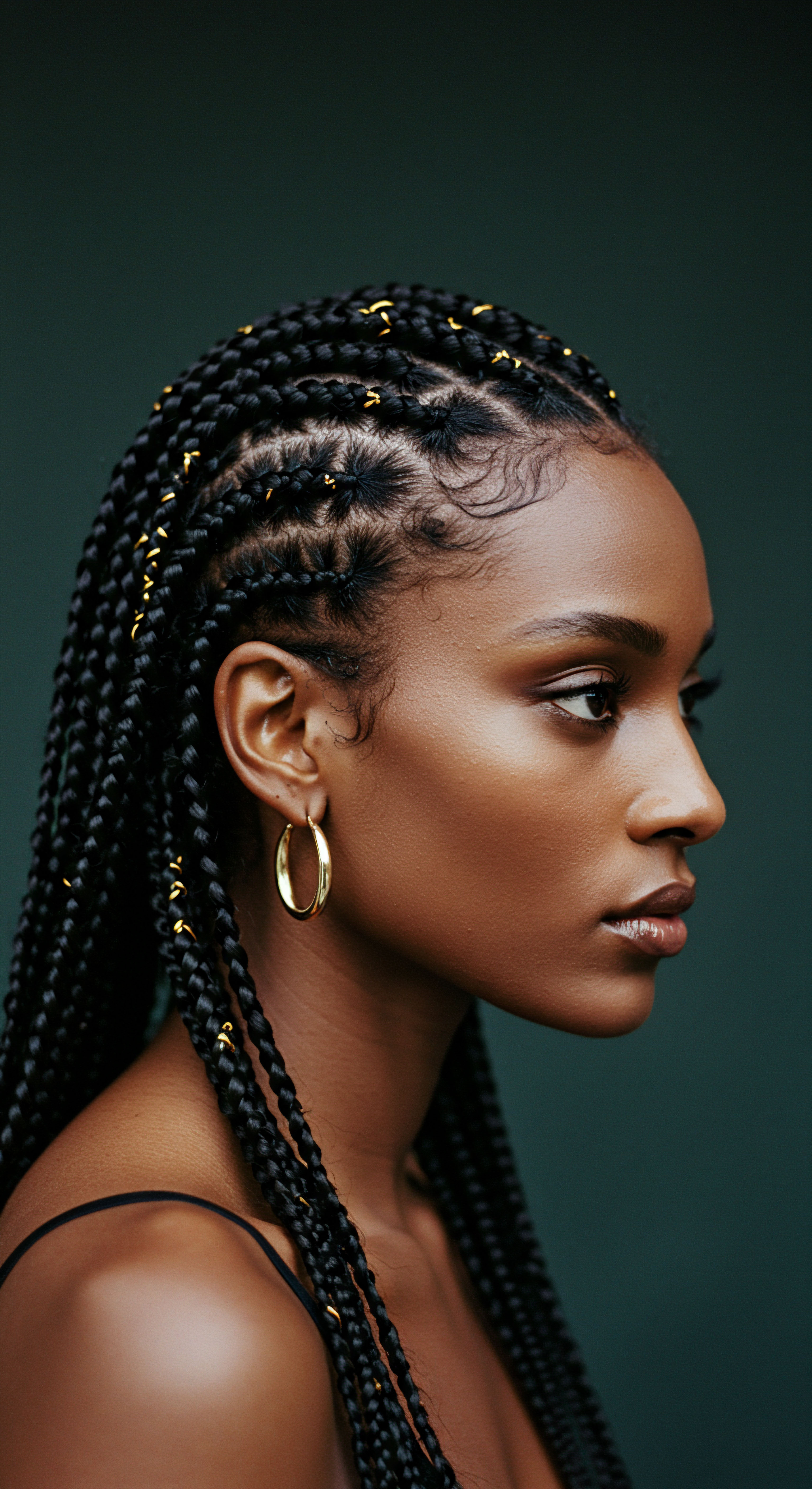
Textured Hair Classification Systems
The journey to understanding textured hair often begins with classification systems, frameworks that attempt to categorize the vast spectrum of curl patterns. While no system perfectly captures the individual nuances of every head of hair, they serve as useful guides for recognizing general characteristics and tailoring care. The most widely recognized system, often attributed to Andre Walker, categorizes hair into four main types ❉ Type 1 (straight), Type 2 (wavy), Type 3 (curly), and Type 4 (coily). Within Types 2, 3, and 4, further sub-classifications (A, B, C) delineate increasing tightness of curl or coil.
Understanding textured hair classifications provides a guiding map for recognizing the diverse spectrum of curl patterns.
For instance, Type 4 Hair, frequently seen in individuals of African descent, ranges from tight S-patterns (4A) to Z-patterns with little visible curl (4C). This particular type often experiences the most significant shrinkage when wet, appearing much shorter than its actual length, and can be the most fragile due to its numerous bends and turns. Recognizing these distinctions is not about rigid labeling, but about fostering a deeper connection to one’s own hair, allowing for informed choices in products and techniques that honor its distinct needs. These systems, while helpful, are tools for observation, not definitions of beauty or worth.
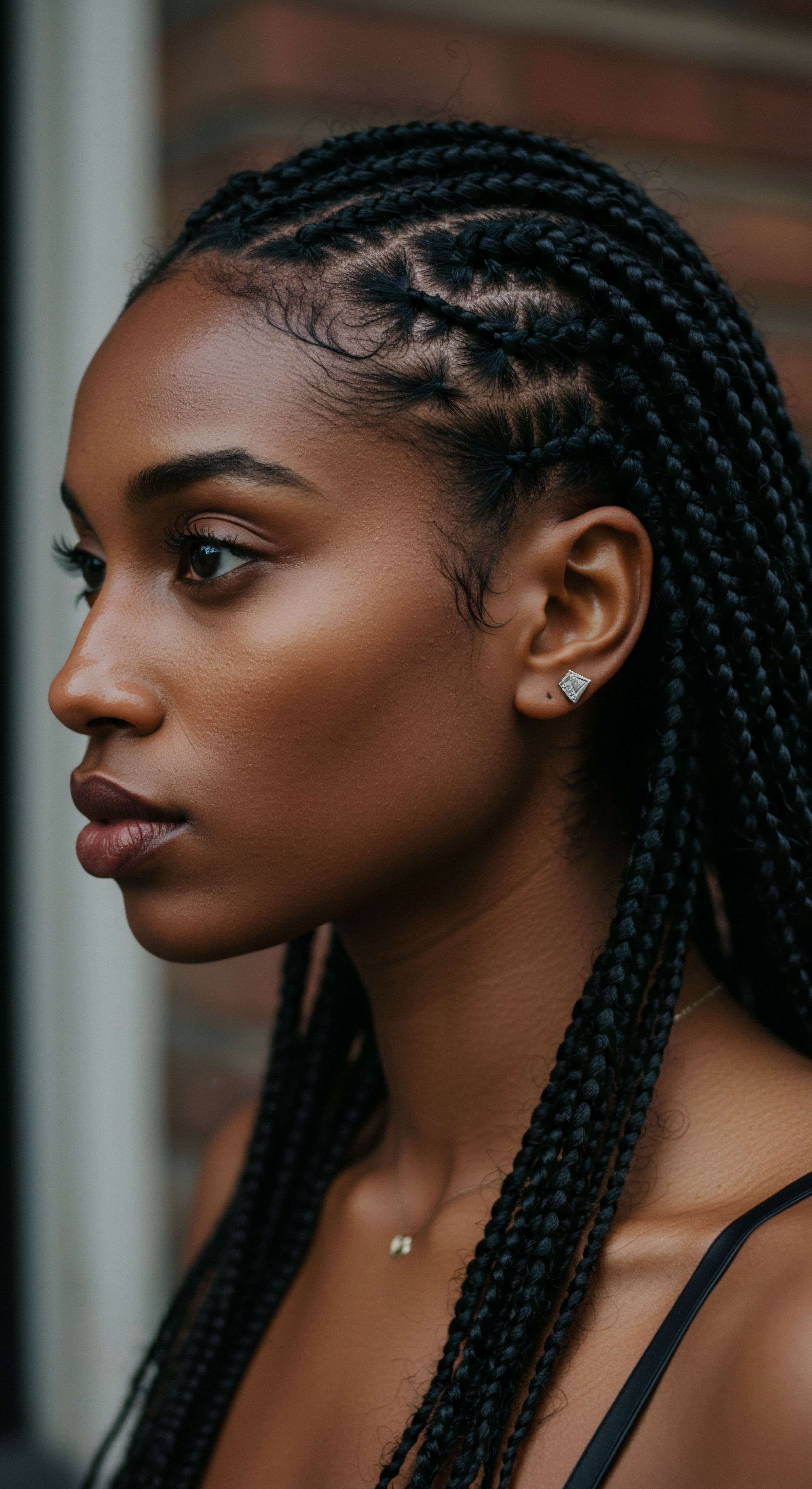
The Essential Lexicon of Textured Hair
Language shapes our understanding, and a precise lexicon allows for clearer conversations about textured hair. Terms like “coily,” “kinky,” “curly,” and “wavy” are more than descriptors; they represent the spectrum of natural patterns. Beyond these, specific terminology has evolved within textured hair communities to describe characteristics and practices.
- Porosity ❉ This refers to the hair’s ability to absorb and retain moisture. Hair with high porosity has a more open cuticle, allowing moisture to enter and leave quickly. Low porosity hair has tightly bound cuticles, making it harder for moisture to penetrate but also to escape.
- Density ❉ This describes the number of individual hair strands on the scalp. High density hair appears thick, while low density hair may appear thinner.
- Elasticity ❉ The hair’s ability to stretch and return to its original state without breaking. Good elasticity indicates healthy, well-hydrated hair.
These terms provide a framework for understanding hair health and responsiveness to care. For example, knowing one’s hair porosity is crucial for selecting products that effectively hydrate and seal in moisture, directly impacting the hair’s appearance and resilience. This shared vocabulary creates a bridge between personal experience and scientific understanding, empowering individuals to communicate their hair needs with precision.
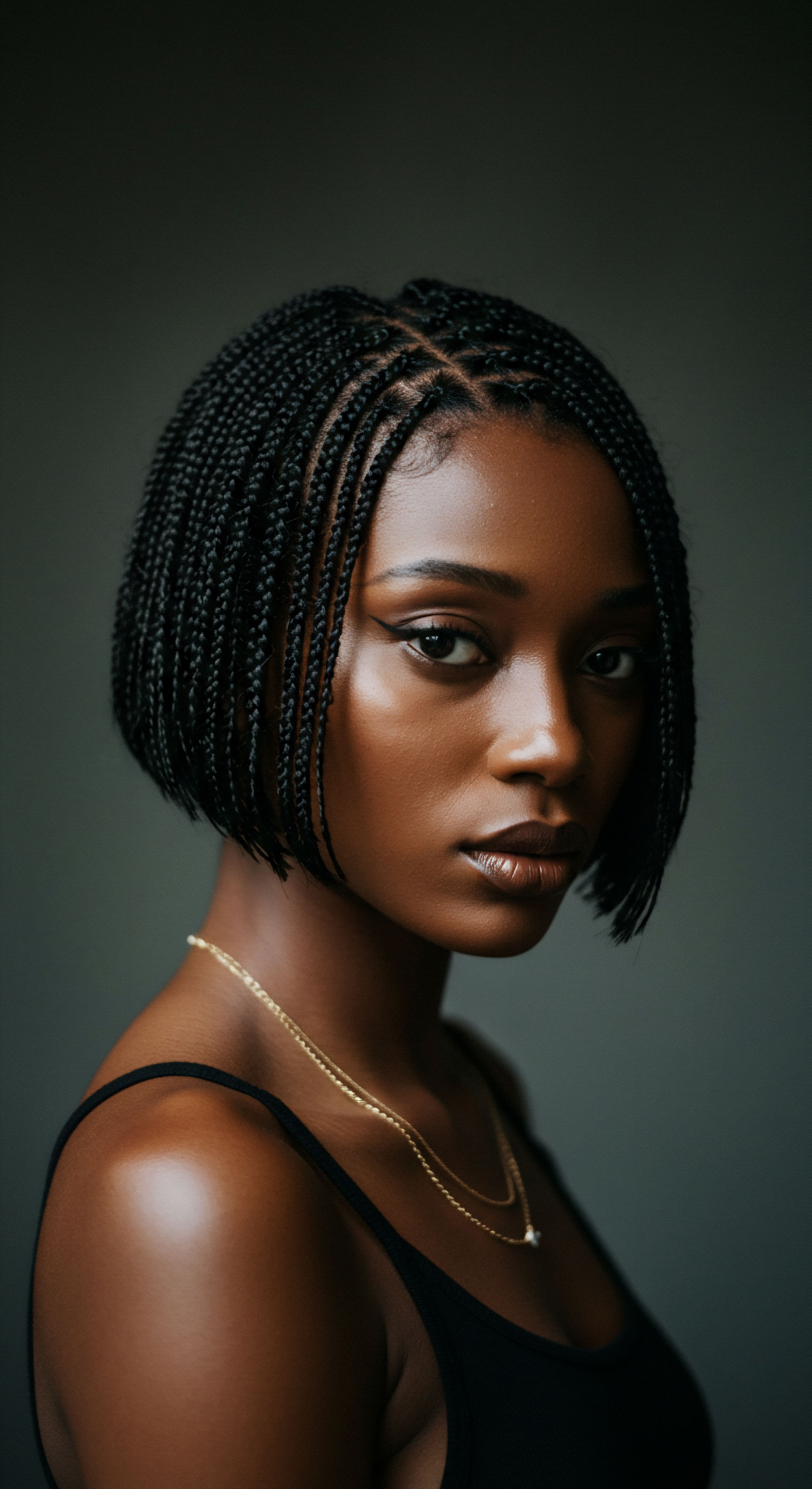
Hair Growth Cycles and Influencing Factors
Hair growth is a dynamic process, unfolding in cycles that dictate the life span of each strand. There are three primary phases ❉ anagen (growth), catagen (transition), and telogen (resting/shedding). The anagen phase, where hair actively grows from the follicle, can last anywhere from two to seven years, largely determining the maximum length hair can achieve. For textured hair, this phase can sometimes be shorter, contributing to perceived slower growth rates, even if the actual growth rate from the scalp is similar to other hair types.
Numerous factors influence these cycles and the overall health of textured hair. Genetics play a significant role, determining curl pattern, density, and natural color. Hormonal fluctuations, nutritional intake, stress levels, and environmental exposures all leave their mark.
A diet rich in vitamins and minerals, for instance, supports healthy hair growth, while chronic stress can prematurely push strands into the resting phase, leading to increased shedding. Understanding these intricate biological rhythms and external influences helps cultivate a more holistic approach to hair wellness, recognizing that what happens internally often manifests externally.
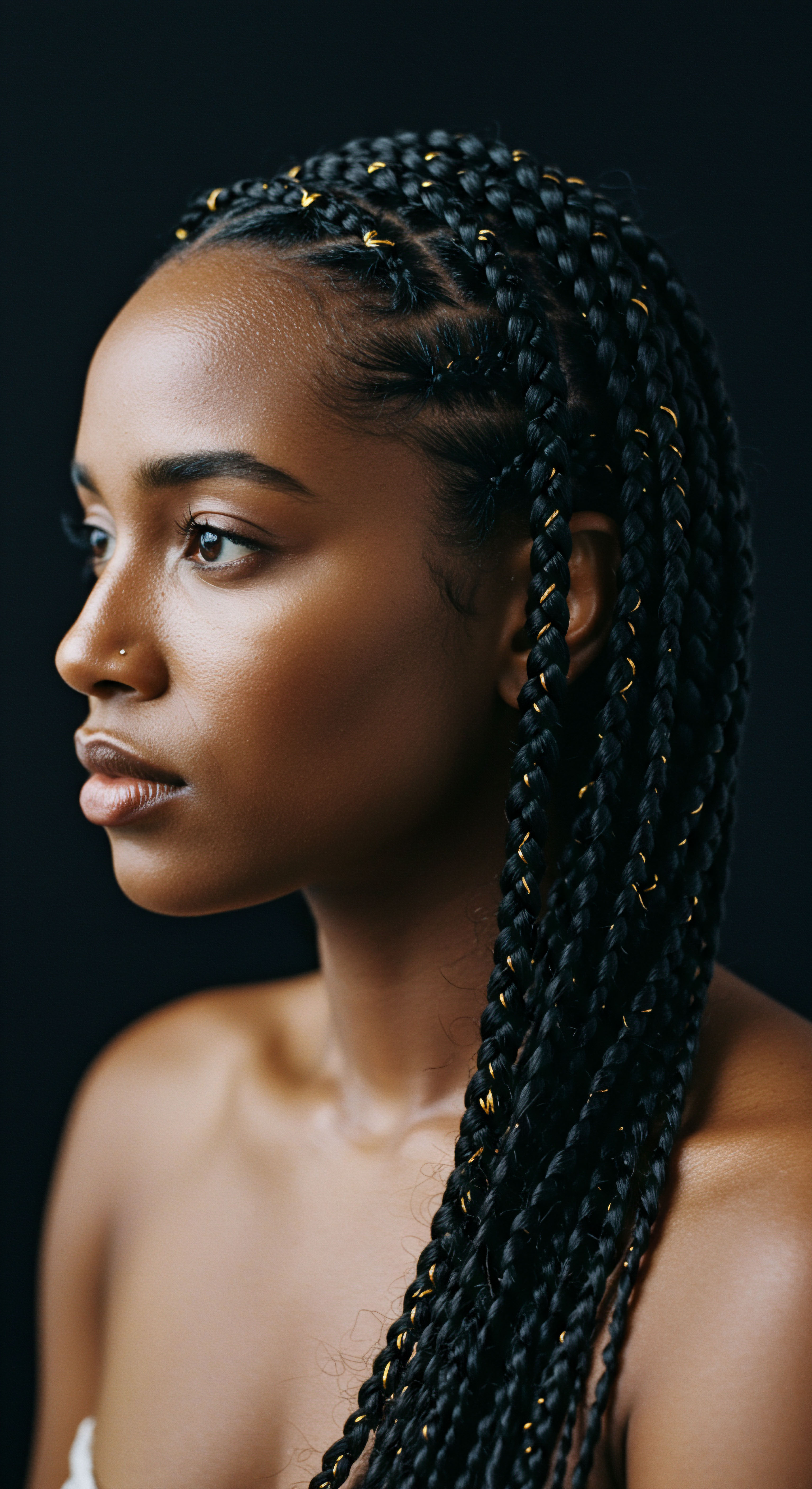
Ritual
Stepping into the space of daily hair practices, we move from the foundational knowledge of hair’s very being to the thoughtful, often deliberate, acts that shape its presentation. The rituals surrounding textured hair are not mere routines; they are acts of connection, preservation, and self-expression. As we consider the legislative protections extended to these expressions, it becomes clear that understanding the methods and tools is just as important as knowing the science. This section invites us to explore the practical wisdom that guides the care and styling of textured hair, honoring the purposeful movements that bring forth its inherent beauty.
The daily application of product, the careful detangling, the precise sectioning for a protective style – each action carries weight, reflecting a deep respect for the hair and the identity it helps to convey. These rituals are often passed down through families, adapted through community knowledge, and refined through personal discovery. They are the tangible expressions of care that the CROWN Act seeks to protect from discriminatory practices.
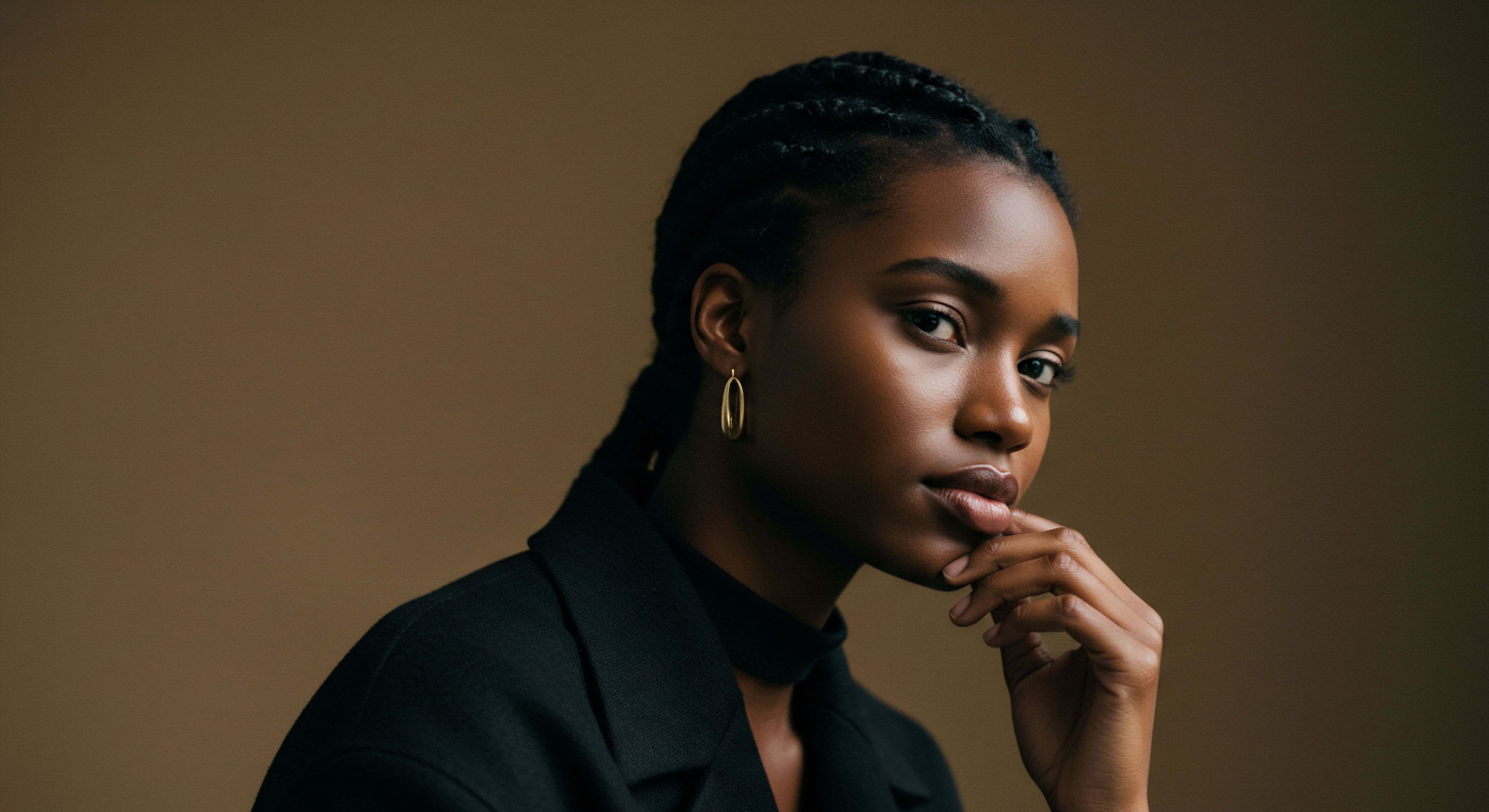
Protective Styling Encyclopedia
Protective styles serve a dual purpose ❉ they guard delicate hair strands from environmental damage and manipulation, and they allow for creative, often intricate, forms of self-expression. These styles minimize daily handling, thereby reducing breakage and encouraging length retention. They are a cornerstone of textured hair care for many.
The range of protective styles is vast and varied, reflecting the ingenuity and cultural heritage of Black communities.
- Braids ❉ This broad category includes box braids, knotless braids, cornrows, and Senegalese twists. Braids involve intertwining three or more sections of hair, often with extensions added for length or fullness. Cornrows, specifically, lie flat against the scalp, forming intricate patterns.
- Locs ❉ A permanent form of protective styling where hair is matted and coiled into rope-like strands. This style represents a profound connection to heritage and often a long-term commitment.
- Twists ❉ Similar to braids but involving two strands of hair twisted around each other. Examples include two-strand twists, flat twists, and Bantu knots.
The practice of protective styling is not simply about aesthetics; it is a practical approach to maintaining hair health, especially for textures prone to dryness and breakage. These styles can last for weeks, offering a reprieve from daily styling demands and allowing the hair to rest and flourish.
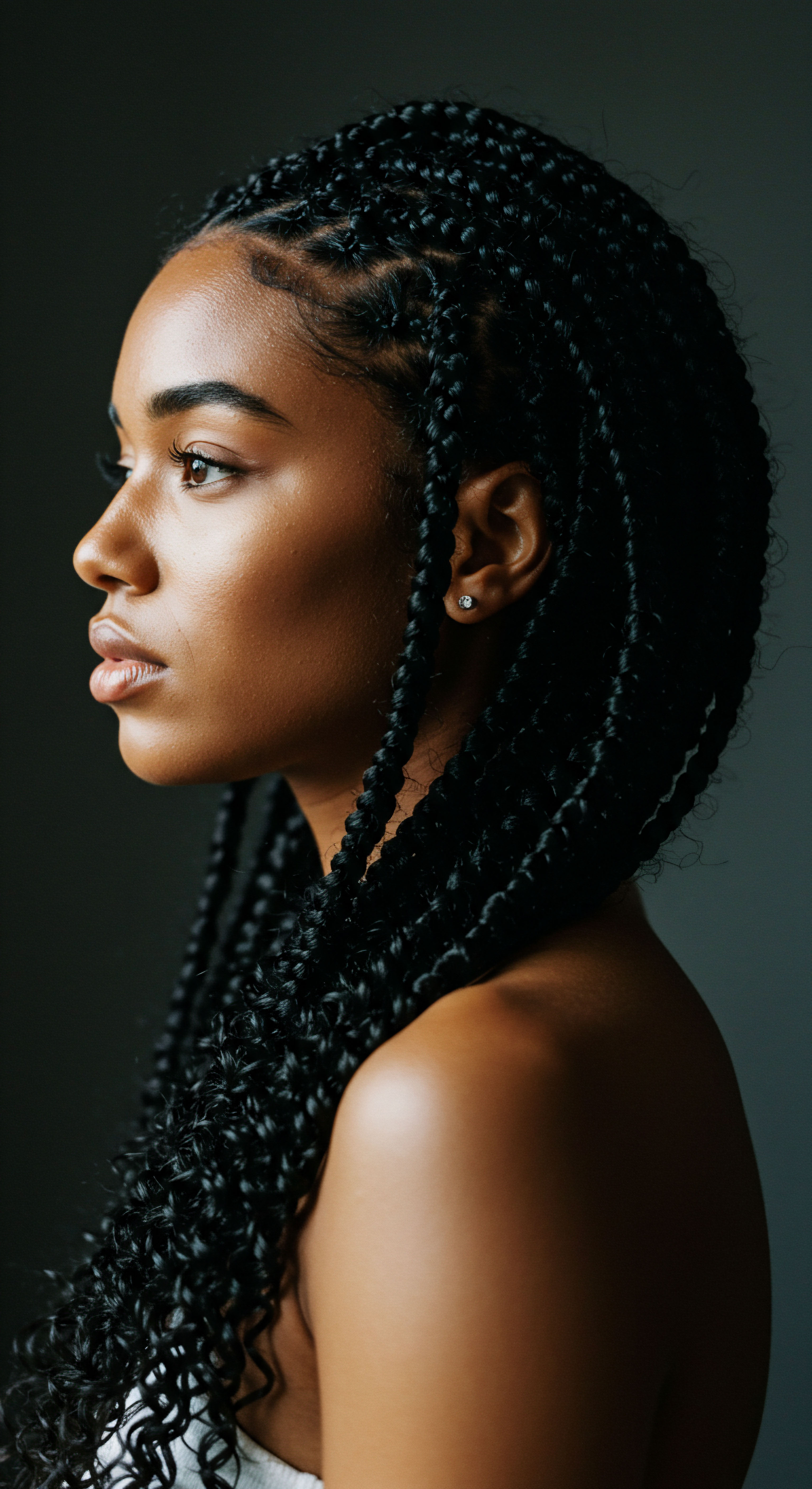
Natural Styling and Definition Techniques
Beyond protective styles, a wealth of techniques exists to define and enhance natural curl patterns, allowing textured hair to be worn in its unbound glory. These methods often focus on hydration and curl clump formation to bring out the hair’s inherent beauty.
Consider the Wash and Go, a method where hair is cleansed, conditioned, and then styled with curl-defining products and allowed to air dry or diffused, encouraging the natural curl pattern to set. This seemingly simple approach requires an understanding of product application and the hair’s response to moisture. Another widely used technique is the Twist-Out or Braid-Out, where hair is sectioned, twisted or braided while damp with product, allowed to dry, and then carefully unraveled to reveal elongated, defined waves or curls.
Natural styling techniques, like the wash and go, allow the hair’s inherent curl pattern to shine, celebrating its unbound beauty.
These techniques are not merely about visual appeal; they represent a conscious choice to celebrate natural texture, a defiance of historical pressures to conform to Eurocentric beauty standards. The care involved in achieving defined curls speaks to a deep personal connection with one’s hair and identity.

Wigs and Hair Extensions Mastery
Wigs and hair extensions offer versatility and additional protective options for textured hair. They allow for dramatic transformations in length, color, and style without altering the natural hair. From full wigs that provide complete coverage to clip-ins that add volume or length, these tools have become integral to many hair care routines.
The selection and application of wigs and extensions require a particular skill set to ensure both a natural appearance and the health of the underlying hair. Proper installation prevents tension and damage, while careful maintenance of the extensions themselves prolongs their life and appearance. This mastery allows for endless creative expression, empowering individuals to experiment with different looks while safeguarding their natural strands.
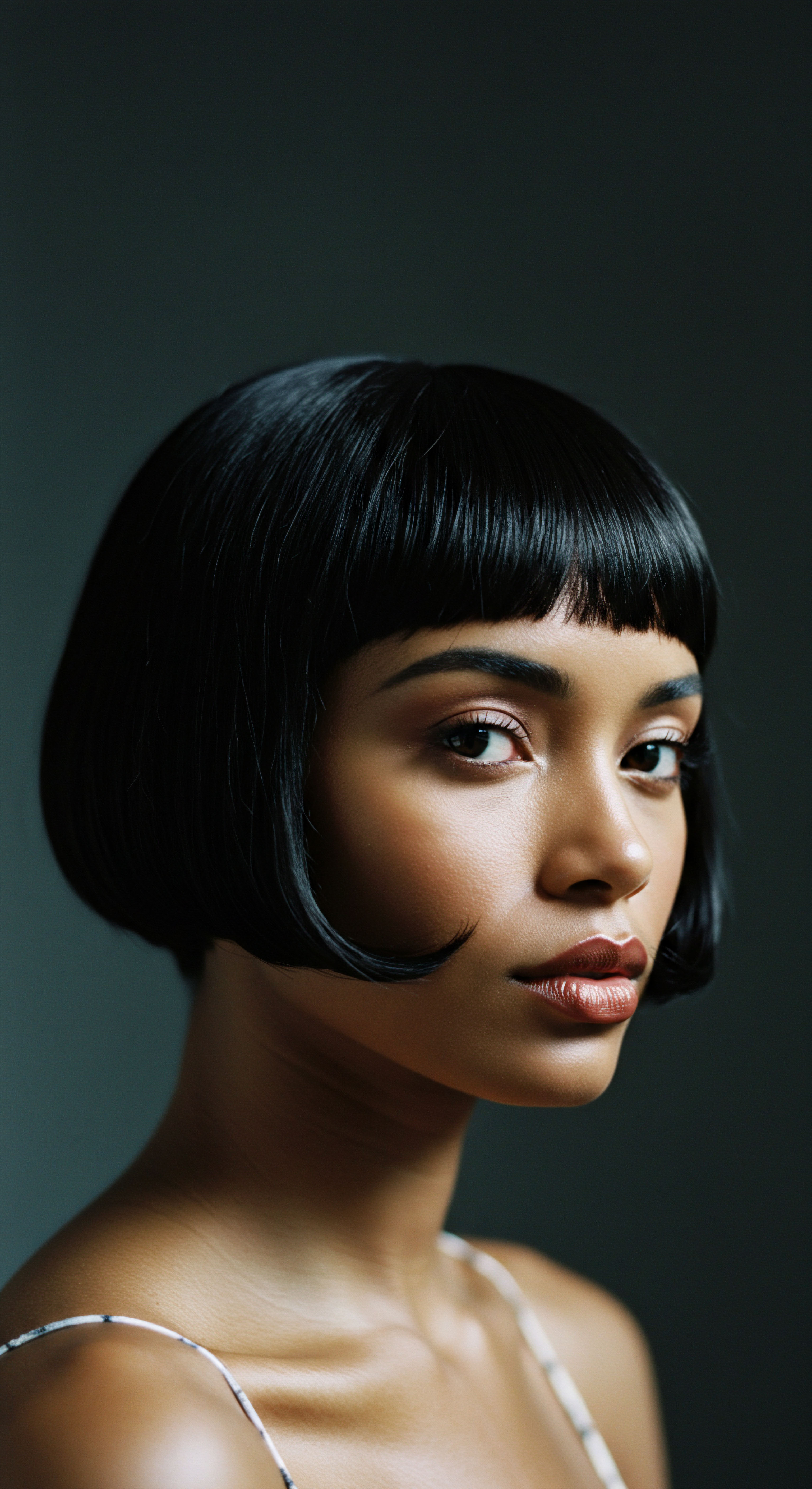
Heat Styling and Thermal Reconditioning
While the celebration of natural texture is paramount, heat styling and thermal reconditioning also hold a place in the spectrum of textured hair practices. These methods involve applying heat to temporarily or permanently alter the hair’s curl pattern. Flat ironing, blow drying, and curling with heat tools are common temporary methods, while chemical relaxers offer a more permanent alteration.
A safety-first approach is absolutely critical when using heat. Excessive heat or improper technique can cause irreversible damage, known as heat damage, which compromises the hair’s natural curl pattern and structural integrity. This damage manifests as limp, straight sections that no longer revert to their original texture.
| Practice Use heat protectant products |
| Rationale Creates a barrier, minimizing direct heat impact on strands. |
| Practice Employ low to medium heat settings |
| Rationale Reduces the risk of thermal damage to the hair's protein structure. |
| Practice Limit frequency of heat application |
| Rationale Frequent heat exposure can lead to cumulative damage over time. |
| Practice Avoid direct contact with the scalp |
| Rationale Prevents burns and irritation to sensitive scalp tissue. |
For chemical relaxers, a process of thermal reconditioning, the focus shifts to professional application and diligent aftercare. These treatments chemically break down the hair’s disulfide bonds, reshaping the hair into a straighter form. Understanding the chemical processes involved and the potential for damage if not performed correctly is paramount for those considering this option.

The Complete Textured Hair Toolkit
Just as an artist relies on a curated set of brushes, individuals with textured hair assemble a toolkit of specific implements designed to honor their hair’s unique structure. The right tools can make the difference between a frustrating styling session and a seamless, enjoyable experience.
Essential items often include wide-tooth combs, detangling brushes with flexible bristles, microfiber towels to reduce frizz and drying time, and satin or silk bonnets or pillowcases for nighttime protection. Each tool serves a distinct purpose, from gently working through tangles to preserving moisture and preventing friction. The collective use of these tools forms a methodical approach to care, supporting the longevity and health of textured strands.
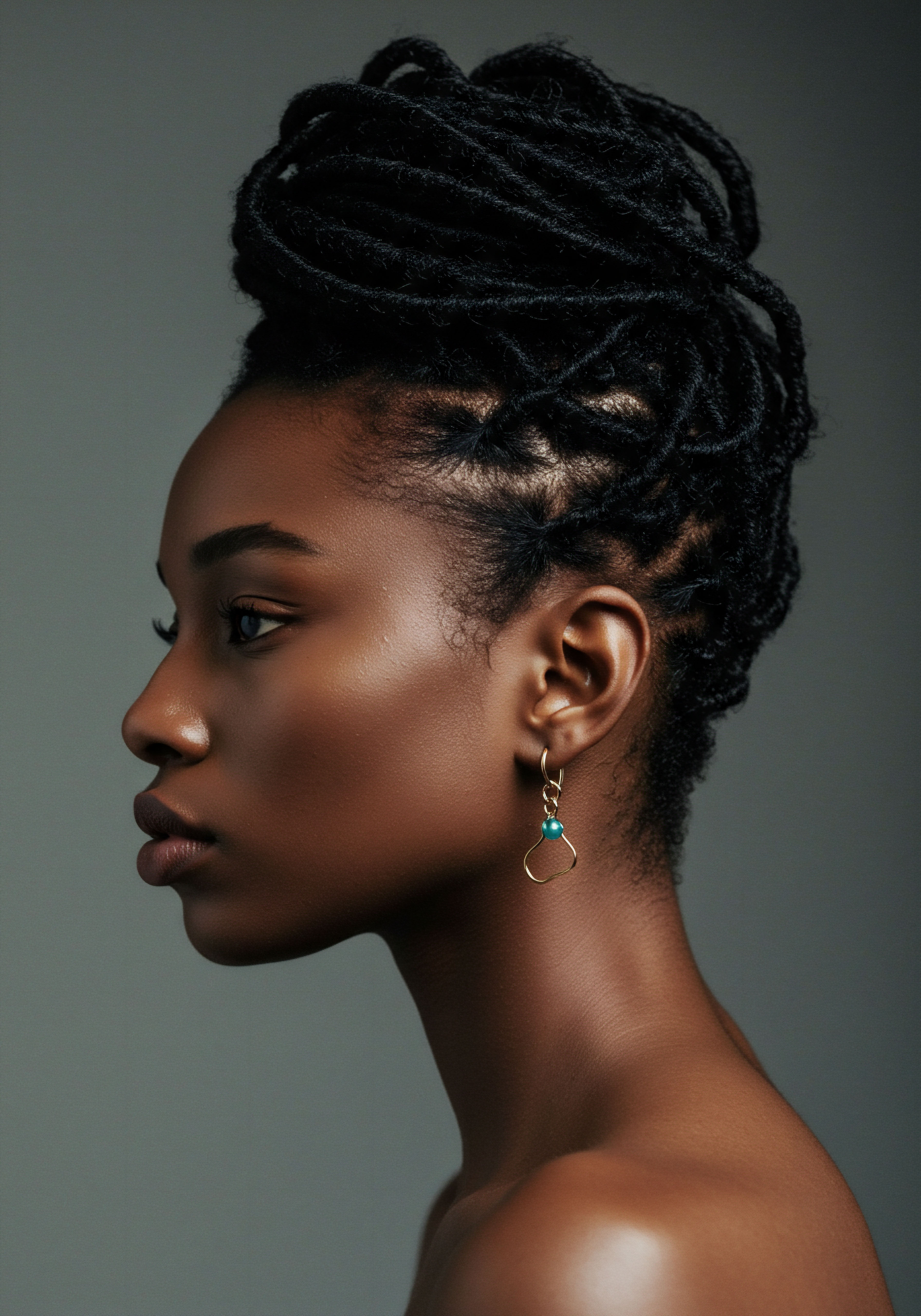
Relay
Our understanding now deepens, moving beyond the personal rituals to the broader societal currents that have shaped the perception and treatment of textured hair. This section asks us to consider the profound implications of legislative efforts like the CROWN Act, which directly addresses historical biases. The Act does not merely list hairstyles; it articulates a commitment to protecting natural hair and its associated protective styles, recognizing them as integral to racial identity and expression. This legislative response is a relay, a passing of the baton in a long race for equity, drawing upon a complex interplay of cultural significance, legal precedent, and the enduring human right to self-expression.
The legal language of the CROWN Act, while appearing straightforward, carries layers of historical context and social weight. It is a direct response to a long history of discrimination, where hairstyles natural to Black individuals have been deemed “unprofessional,” “distracting,” or “unkept” in workplaces and schools. This section will peel back those layers, examining the specific categories of styles the Act protects by implication and definition, rather than by explicit enumeration, and how this legislative framework aims to dismantle systemic biases.
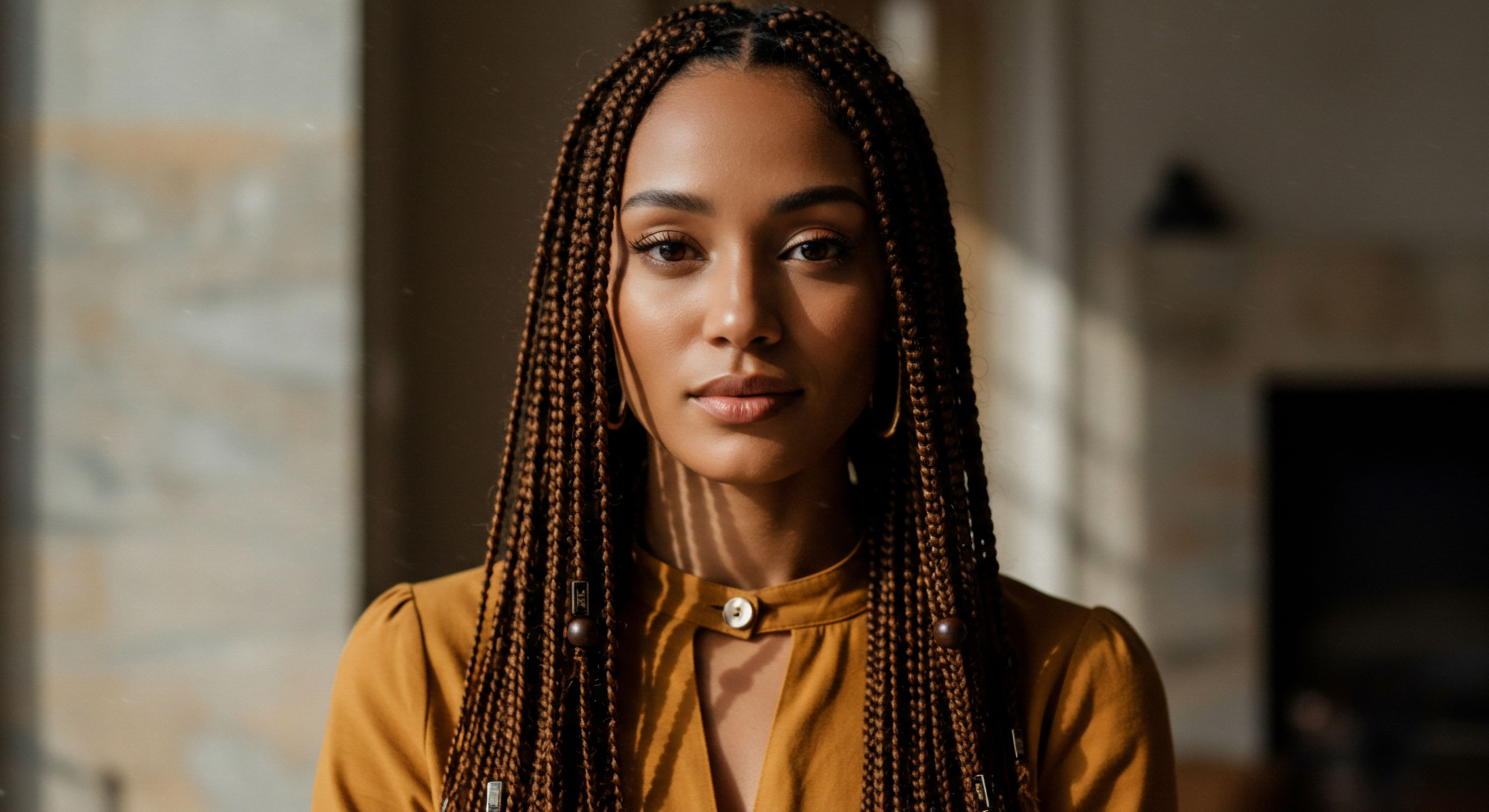
Defining Discrimination Through Hair
To comprehend the CROWN Act’s intent, one must first grasp the pervasive nature of hair discrimination. This discrimination is not simply about personal preference; it is a systemic issue rooted in Eurocentric beauty standards that have historically marginalized Black hair textures and styles. Research consistently demonstrates that individuals with textured hair, particularly Black women, face disproportionate scrutiny and negative consequences in professional and educational settings due to their hair.
A significant study by Dove and LinkedIn in 2023, for instance, revealed that Black Women are 2.5 Times More Likely to Be Perceived as Unprofessional Than White Women Because of Their Hair. Furthermore, Black women are more likely to be sent home or know of a Black woman who has been sent home from work or school because of her hair. This stark statistic underscores the tangible, real-world impact of hair bias, highlighting the urgent necessity for legal intervention. The CROWN Act directly confronts this pervasive perception, aiming to redefine what is considered “professional” or “appropriate” in a way that is inclusive of all hair textures.
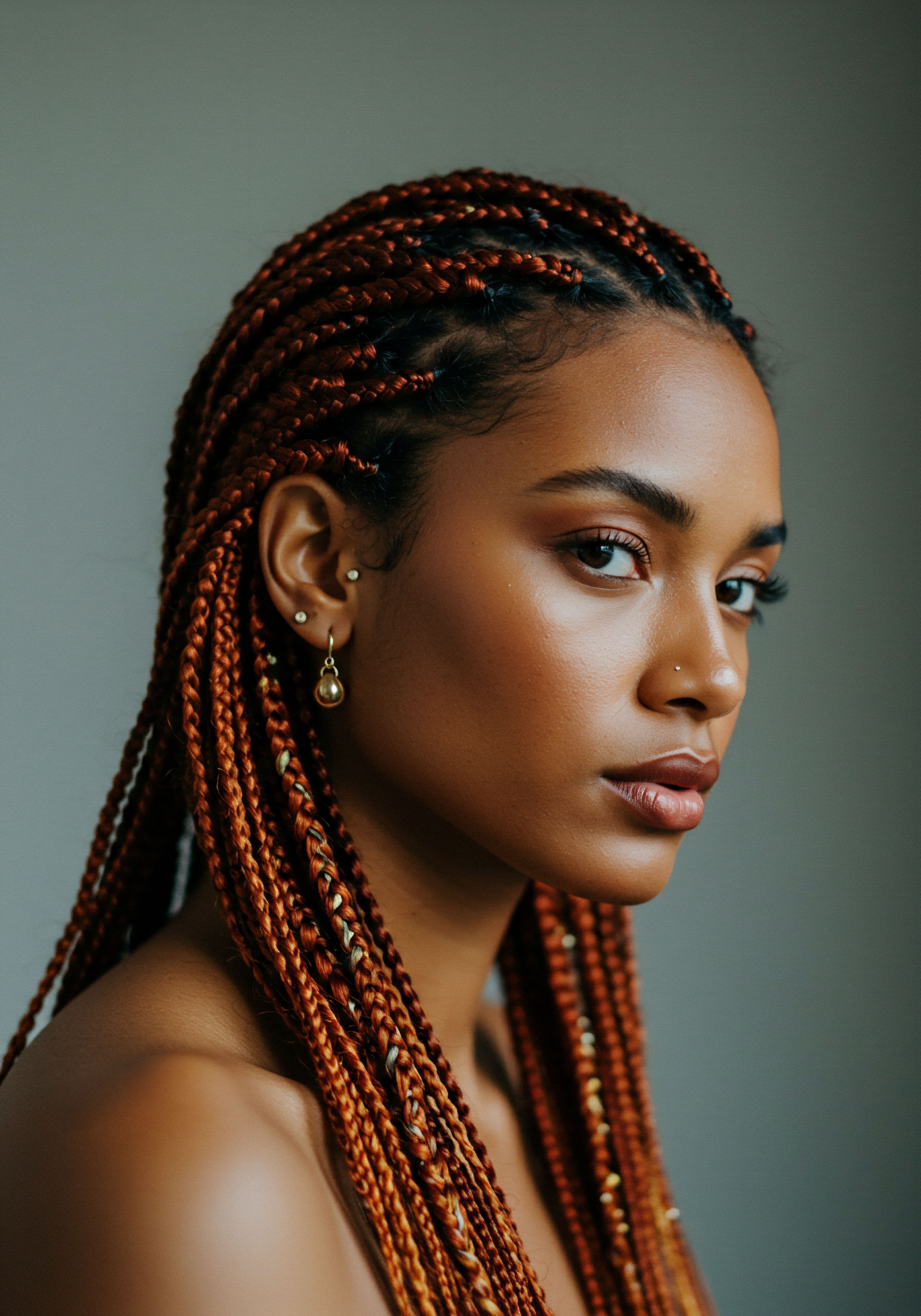
What Hair Expressions Does the CROWN Act Protect?
The CROWN Act, an acronym for “Creating a Respectful and Open World for Natural Hair,” prohibits discrimination based on hair texture and protective hairstyles associated with race. Crucially, the Act does not provide an exhaustive list of specific named hairstyles. Instead, its power lies in its broad, yet precise, definitional language. It extends protection to “traits historically associated with race, including but not limited to hair texture and protective hairstyles.” This legislative approach is designed to be comprehensive, anticipating the varied ways in which racial discrimination through hair might manifest.
The term “protective hairstyles” is central to the Act’s scope. While not itemized, this term encompasses a wide array of styles commonly worn by Black individuals to protect their natural hair from damage and promote growth. These styles include:
- Braids ❉ This category broadly includes styles like box braids, cornrows, micro braids, and knotless braids. These styles involve the intricate interlacing of hair strands, often with extensions.
- Locs ❉ A style where hair is intentionally matted and coiled into rope-like strands. Locs can range in size and length and are a significant cultural expression.
- Twists ❉ Styles where two strands of hair are twisted around each other, such as two-strand twists, flat twists, and Senegalese twists.
- Bantu Knots ❉ A style where sections of hair are twisted and coiled tightly against the scalp, forming small, coiled buns.
- Afros ❉ The natural, unmanipulated growth of coily or curly hair, forming a rounded shape. This style represents natural hair freedom and volume.
The Act’s phrasing, “including but not limited to,” is a powerful legal mechanism. It ensures that the protections are not limited to a finite list that could become outdated or circumvented. Instead, it creates a flexible framework that can adapt to evolving styles and forms of hair expression. The focus remains on the racial association and protective nature of the styles, rather than their specific aesthetic.
The CROWN Act safeguards hair textures and protective styles historically linked to race, providing broad protection rather than a restrictive list.
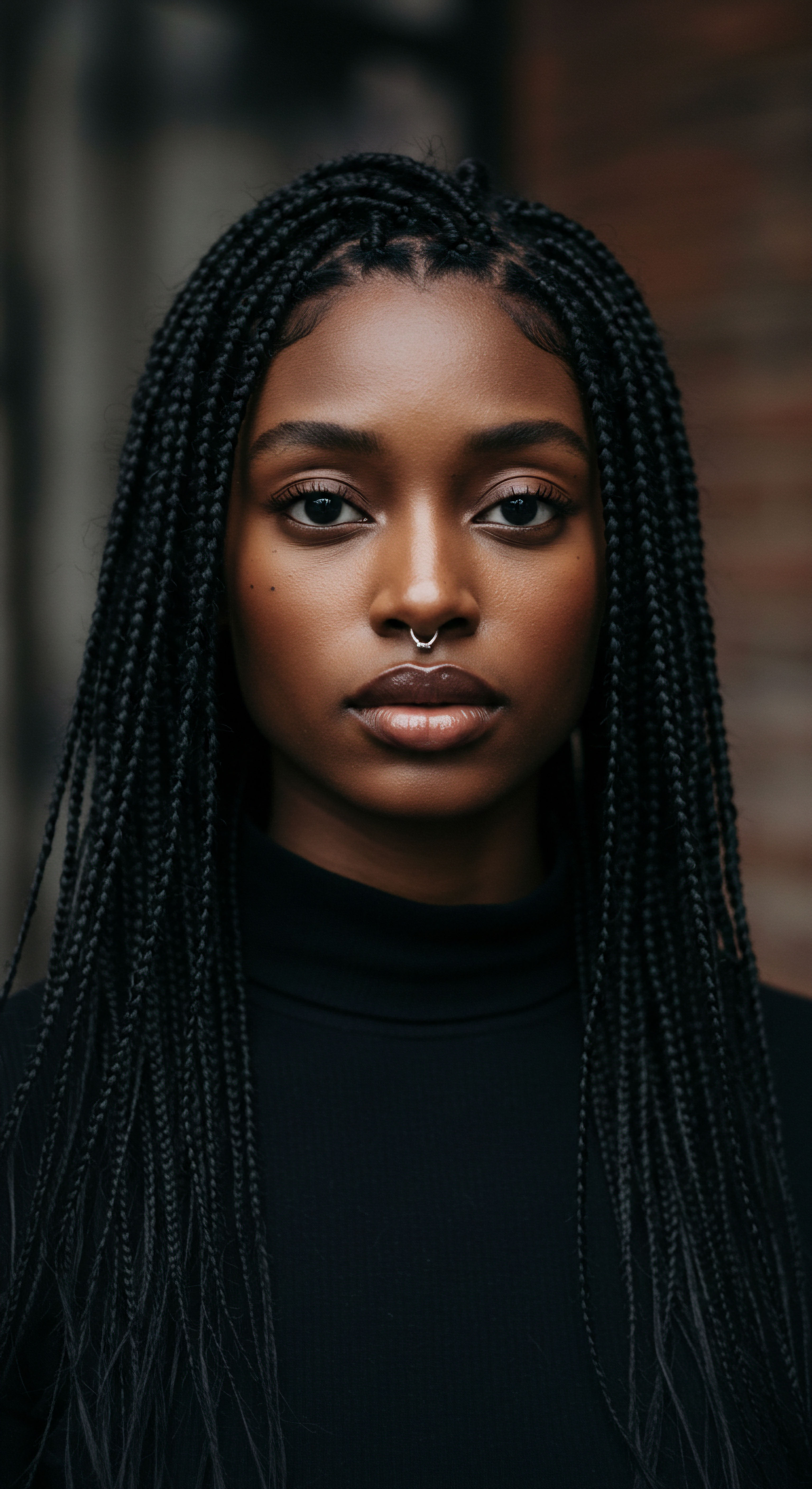
The Interplay of Culture, Identity, and Law
The CROWN Act represents a critical intersection of cultural identity, legal protection, and social justice. For generations, Black individuals have faced pressure to alter their natural hair textures to conform to dominant beauty standards, often at significant personal and professional cost. This pressure has manifested in policies that explicitly or implicitly banned natural hairstyles in schools and workplaces, leading to adverse educational outcomes, job denials, and disciplinary actions.
The legislative push for the CROWN Act gained momentum from grassroots activism and the increasing awareness of these discriminatory practices. It builds upon existing civil rights legislation, aiming to clarify and strengthen protections against racial discrimination that manifests through hair bias. By explicitly recognizing hair texture and protective styles as racial traits, the Act reinforces the idea that discrimination based on these characteristics is a form of racial discrimination, therefore illegal under broader civil rights laws.
| Era/Legislation Civil Rights Act of 1964 (Title VII) |
| Key Contribution Prohibits employment discrimination based on race, color, religion, sex, or national origin. Initial interpretations often excluded hair. |
| Era/Legislation Federal Court Cases (e.g. Rogers v. American Airlines, 1981) |
| Key Contribution Early cases grappling with hair discrimination, often ruling against plaintiffs unless a direct racial impact could be proven. |
| Era/Legislation CROWN Act (State & Federal) |
| Key Contribution Explicitly adds hair texture and protective styles as protected characteristics, clarifying racial discrimination. |
| Era/Legislation The CROWN Act marks a significant legal advance in the fight against hair discrimination. |
The impact extends beyond the courtroom. The Act serves as an educational tool, raising public awareness about hair discrimination and challenging preconceived notions about professionalism and appearance. It encourages a broader acceptance of natural hair diversity, fostering environments where individuals feel secure in their authentic selves.
The conversation it sparks helps dismantle implicit biases, moving society towards a more inclusive understanding of beauty and identity. This legal framework does not merely react to discrimination; it proactively seeks to shape a more equitable future, where one’s natural hair is a source of pride, not a barrier to opportunity.
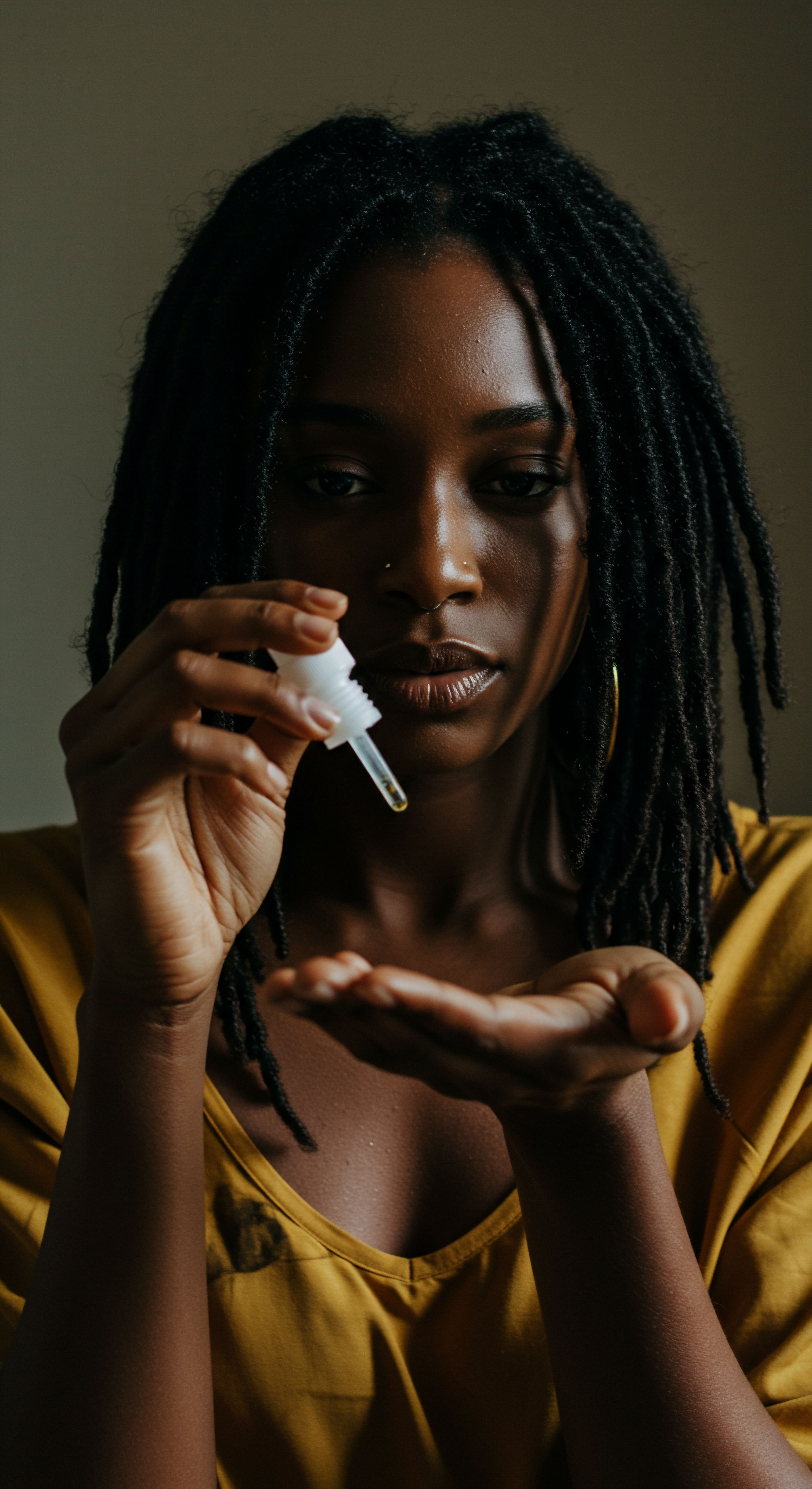
Reflection
As our exploration of the CROWN Act and the intricate world of textured hair concludes, we are left with a deeper sense of connection to something profoundly personal yet undeniably universal. The journey from the microscopic structure of a hair strand to the sweeping impact of legislative change reveals a story of resilience, identity, and the quiet strength found in authenticity. It reminds us that understanding our hair, in all its diverse forms, is a powerful act of self-acceptance, a gentle rebellion against outdated norms. The conversations sparked, the protections enacted, all contribute to a world where every coil, curl, and loc is not just seen, but celebrated, a testament to the enduring beauty of who we are, naturally.

References
- Dove CROWN Research Study, “The CROWN Act ❉ A Guide to Creating a Respectful and Open World for Natural Hair,” 2023.
- Byrd, A. S. & Tharps, L. D. (2014). Hair Story ❉ Untangling the Roots of Black Hair in America. St. Martin’s Press.
- Banks, I. (2000). Hair Matters ❉ Beauty, Power, and Black Women’s Consciousness. New York University Press.
- Patton, T. D. (2006). Blowing the Lid Off the Texturism Box ❉ A Critical Examination of Hair-Based Discrimination. Journal of Black Studies.
- Mercer, K. (1994). Welcome to the Jungle ❉ New Positions in Black Cultural Studies. Routledge.
- Hooks, B. (1995). Art on My Mind ❉ Visual Politics. The New Press.
- White, M. & White, D. (1995). Stylin’ ❉ African American Expressive Culture from Its Beginnings to the Zoot Suit. Cornell University Press.
- Grier, S. A. & Gilly, M. C. (2020). Hair Discrimination in the Workplace ❉ An Examination of the CROWN Act. Harvard Law Review Forum.